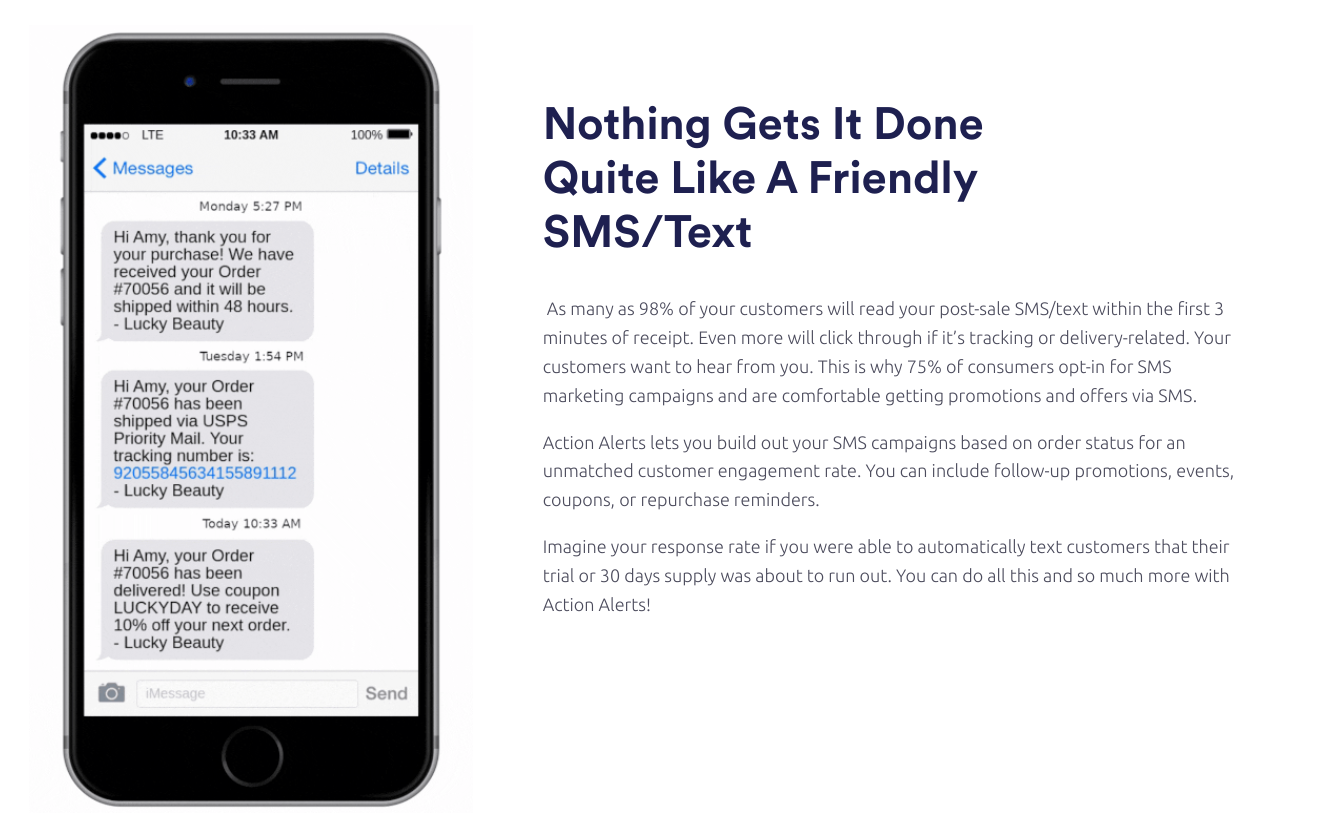The Ultimate Guide to Ecommerce Text Message Marketing

Despite all of the advancements, breakthroughs and new strategies that have been developed in ecommerce marketing, text messaging has proven to be one of the most effective ways to engage customers and market your business. The return-on-investment (ROI) for ecommerce text messaging is astounding with possible rates as high as $8.11 per message.
Ecommerce businesses have been using text message marketing for decades to great success (SMS marketing has an incredible open rate of 98%), but the medium is still vastly underutilized. In fact, only 39% of retailers use text messaging in their marketing strategy.
In this guide we will explore why your company should be using ecommerce text message marketing and how to successfully implement it into your marketing strategy.
What is Ecommerce Text Message Marketing?
By using a permission-based text message marketing strategy that consumers must opt-in to receive messages, retailers are able to send advertisements and promotions to their customers. Consumers prefer speed and convenience when engaging with businesses and SMS offers both while being dynamic enough to provide different use cases.
SMS marketing makes businesses more accessible and creates a personal connection to shoppers. Ultimately, this communication fosters the growth of brand loyalty and business reputation.
However, only 13% of ecommerce retailers enable their customers to reply to text messages. Typically, these messages include phrases such as ‘Do Not Reply’ or ‘Do Not Respond.’ Yet a vast majority (69%) of customers across all age groups would love to have the ability to respond to businesses via text.
These retailers are missing out on critical engagement and potentially important information such as them asking how to place an order, an inquiry about the product or asking for a product review that could help improve your business.
Variants of SMS Marketing
There are many different types of SMS marketing campaigns, but some of the most common include:
- Alerts, notifications and shipping updates
- Loyalty programs
- Flash sales
- Promotional discounts and deals
- SMS coupons
- Text-to-win contests

How does SMS Marketing Work?
The process for starting an ecommerce marketing text message campaign is remarkably simple. Once an SMS ecommerce management software, such as ReadyCloud’s Action Alerts, has been integrated into your businesses existing software, you can begin sending texts en masse.
Studies show that consumers love post-purchase text messages and status updates. To accomodate this, simply craft a text message, choose your audience through a contact list or by purchase history and click send. The message then enters an SMS gateway via the web to reach your selected recipients.
Specifically, with Action Alerts, you can even take things a step further by setting Triggers that automatically deliver a series of messages, such as Order Status, Shipping Status, Return Status, Order Updates, and other elements such as Specials, Order / Subscription Reminders, Upsells, Cross Promotions and more, with options for behavior-based and seasonal messaging to keep your brand in sight and increase engagement across the board.
Ecommerce text messaging software provides features such as two-way SMS communication, designated virtual numbers, identifying keyword triggers sent by customers to send relevant information and personalized messages that are topical, relevant and appealing.
According to data that was compiled by eMarketer, text message is the most preferred method of business to consumer contact (48%), followed by email (22%), app notifications (20%) and direct mail (8%).
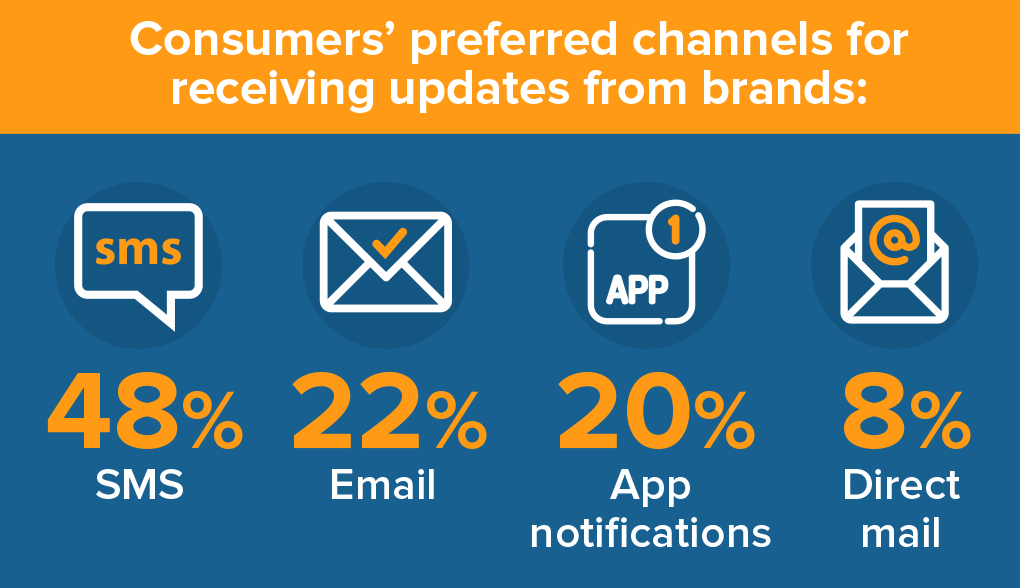
SMS Marketing Statistics
Ecommerce SMS marketing has the highest engagement rate, ROI and click-through rate (CTR) compared to any other channel. Oftentimes, marketing emails sit in consumer inboxes completely ignored and unopened while frequently are directed to spam folders (49.7% of marketing emails end up labeled as spam). Unopened emails are a waste of your marketing budget and a loss of time and effort that your business simply cannot afford.
There is still room for email in your marketing strategy, but the following statistics provide the evidence showcasing that SMS marketing should be your primary focus in engaging your customers.
➡️ 97% of Americans own a smartphone
➡️ 85% of US adults own a smartphone
➡️ 96% of Gen Z own a smartphone
➡️ 45% of adults believe mobile devices are becoming their most important shopping tool
➡️ 58.7% of consumers respond to their text messages within five minutes
➡️ 61% of marketers plan to increase SMS marketing budgets in 2025
➡️ 41% of marketers have seen increasing SMS opt-in rates
➡️ 53.75% of business owners and marketers believe “fast delivery” is the biggest consumer benefit of texting.
➡️ SMS marketing conversion rates are 102%
➡️ 45.5% of consumers are most likely to opt into SMS marketing from e-commerce and retail brands
➡️ Email open rates are low compared to SMS at 20%
➡️ SMS marketing messages have a 10.63% CTR
Why is SMS Marketing So Effective?
Taking into consideration the above statistics, an undeniable urge for people to open every text message they receive and that consumers touch their smartphones an almost unbelievable 2,617 times per day it’s fairly simple to see why SMS marketing is so effective.
Unsurprisingly, 61% of all website visits come from a smartphone according to Google Analytics. With mobile devices being overwhelmingly our favorite tech, it makes sense for ecommerce companies to target consumers using its main form of communication — SMS.
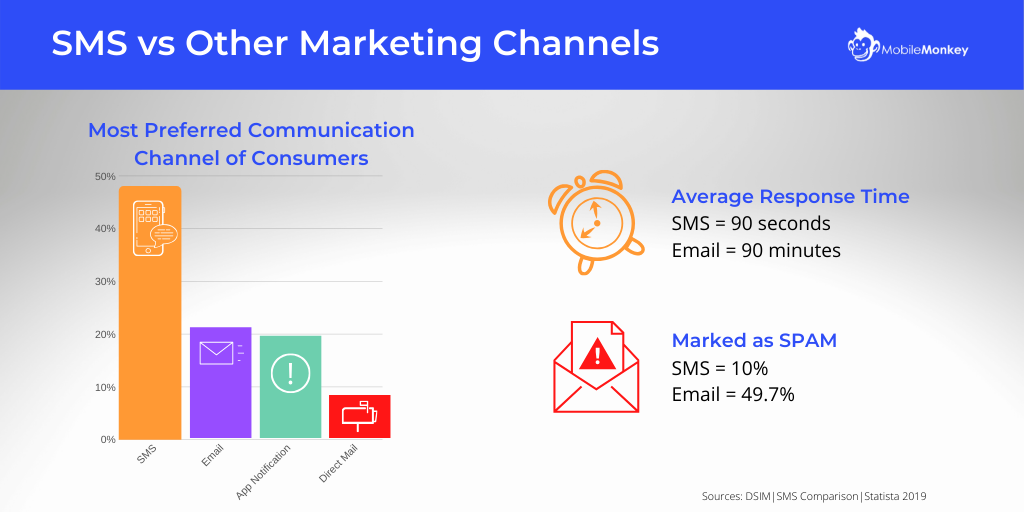
A good ecommerce text message marketing software can provide in-depth reports and data on the success of your text messaging campaigns.
Features within campaign reports include instant delivery/read receipts, messages received, response percentages, the number of messages that have been delivered and how long it took for engagement to occur.
Proven SMS Ecommerce Marketing Strategies
As stated, before there are many different use cases for SMS marketing software, but let’s explore further the most common strategies you may want to implement within your operations.
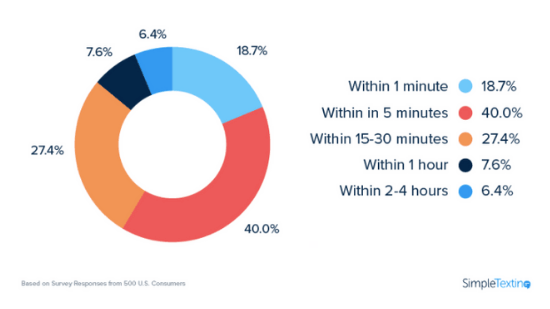
➡️ Alerts, notifications and shipping updates: This may be one of the simplest, but most critical uses for SMS marketing. Using SMS, you can convey pertinent post-purchase information to your customers such as store openings/closures, updated store hours, new products/services, special events, ticket sale alerts and back in stock notifications.
When a customer places an order, they should receive order processing and shipping updates soon after purchase creating a feeling that they set a machine in motion. Keeping your customers up to date on shipping information reassures them that their order has been received and is being processed while reducing tickets for your service teams.
➡️ Loyalty programs: SMS creates a great platform to improve customer loyalty with a loyalty program. After a customer opts-in a welcome message can be sent with a gift/discount.
These loyalty members can be saved as a group within the SMS marketing software and then sent offers and exclusive discounts all at once.
➡️ Flash sales: Just as the name suggests flash sales can be offered whenever you need to offload your entire seasonal stock or older models/items that need cleared out. These messages typically include phrases such as ‘All Stock Must Go,’ ‘Clearance’ and ‘This Weekend Only.’
Impulse buying drives flash sales so these messages should be sent right before the sale begins.
➡️ Promotional discounts and deals: These messages should include the percentage off on the item, terms and conditions and the time frame of the promotion’s availability or a link to a landing page that includes this information.
These messages should create a sense of urgency to promote impulse buying.
➡️ SMS coupons: Digital coupons are similar to promotional discounts and deals, but tend to have a longer date of expiration. These messages should be engaging visually and include all pertinent information regarding the sale.
➡️ Text-to-win contests: Text-to-win contests are a simple way to gain contact information to market to. Through marketing in-store or online you can direct customers to text a unique, easy to remember and dedicated SMS contest number.
Be sure to make customers aware that texting the contest number will opt them into marketing messaging. Collect the information provided by customers and then choose your winner. Simple and effective data mining for your marketing strategy!
Wrapping It All Up
Ecommerce SMS marketing is the simplest and most cost-effective way to engage with your customers and keep them up to date on important information regarding your business. If you’re ready to implement SMS marketing into your business strategy, contact us today for a free consultation.
Need Even More Tips?
We’ve got you covered. Find out even more by reading our related guides below. Or keep scrolling to check out a nifty infographic we’ve made on cross-channel ecommerce statistics for 2022.
➡️ These Post-Purchase Text Messages Can Drive New Business
➡️ Shop Online. Get Ready for Post-Purchase Texts You Want to Read
The Future of Ecommerce is Now
Staying ahead in the ecommerce industry means embracing innovation and anticipating changes before they arrive. The trends shaping 2024 provide valuable insights into what’s next, but the future also brings exciting new possibilities. Businesses that adapt quickly and leverage the right tools will thrive in this dynamic landscape.
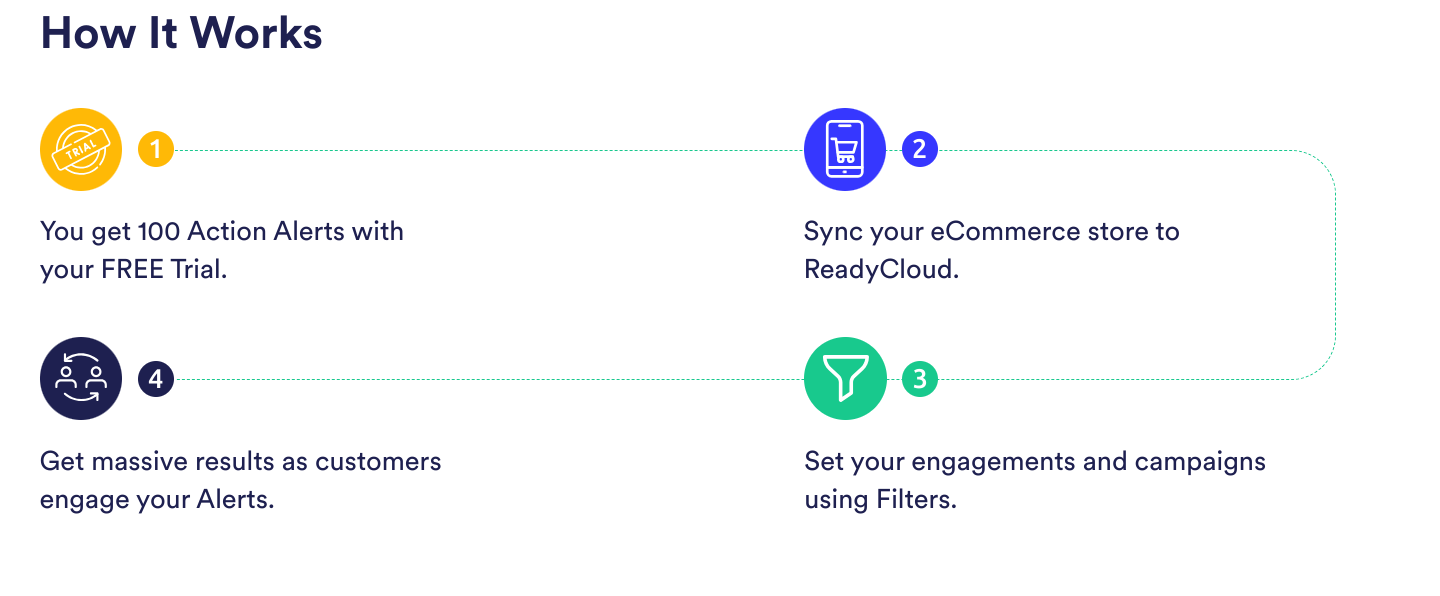 Ready for 2025? ReadyCloud Has You Covered!
Ready for 2025? ReadyCloud Has You Covered!
Success in 2025 starts with the right tools, and ReadyCloud’s suite of solutions is designed to propel your ecommerce business to new heights. With ReadyCloud, you’ll have all your data centralized in one place, offering insights that drive smarter decisions. Take your marketing to the next level with Action Alerts, delivering growth-focused, automated campaigns that keep your customers engaged.
What You Should Do Now
Here are 3 ways ReadyReturns can help you deliver amazing return experiences that eliminate prepaid labels and boxes, delight customers, and protect your margins:
Schedule a Demo – See how ReadyReturns turns product returns into your competitive advantage with “Amazon-like” returns and cost-saving features.
Start Your Free Trial of ReadyReturns (No CC Required) – Set up in minutes. Instantly offer QR code returns, product exchanges, and custom return rules that turn frustrated customers into repeat buyers.
Try Readycloud at No Cost – Why manage shipping and returns separately? Get ReadyShipper X, ReadyReturns, and more in one unified platform for seamless fulfillment and order management.
Share On:

